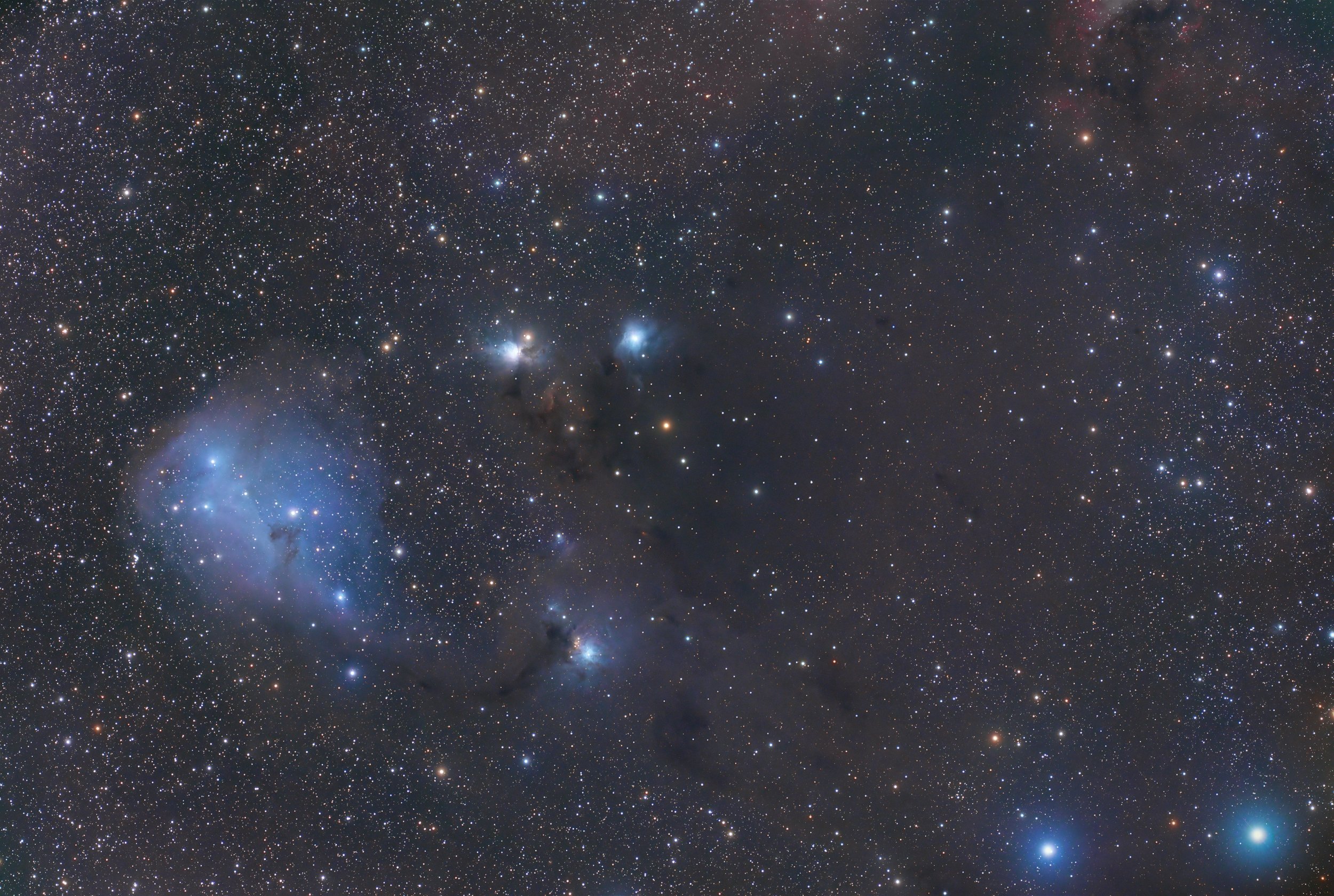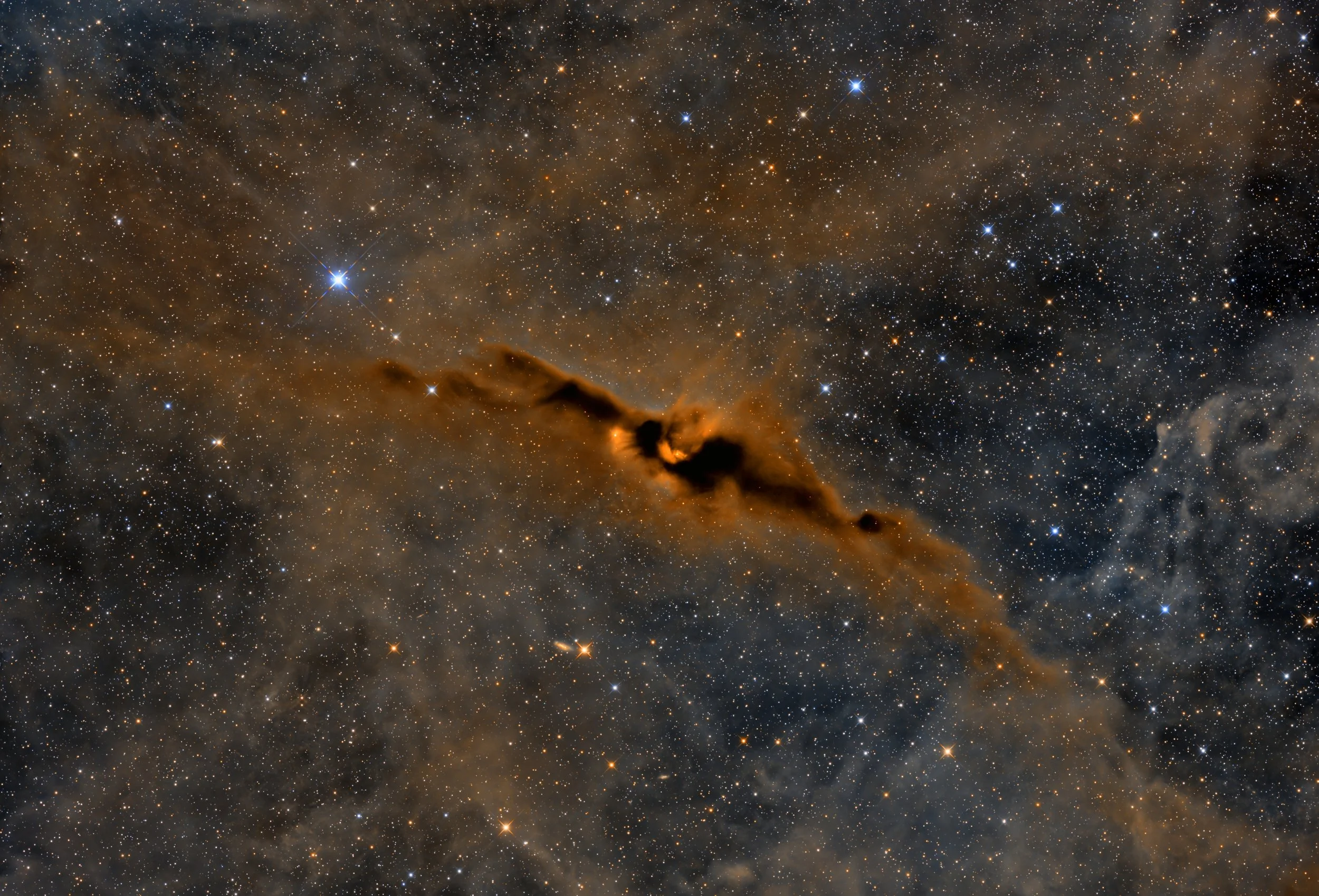
AAPOD2 Image Archives
Angel nebula NGC2170
NGC 2170, often referred to as the Angel Nebula, is a stunning reflection nebula in the constellation Monoceros, located approximately 2,700 light-years away. Unlike emission nebulae, which glow due to ionized gas, reflection nebulae shine by scattering and reflecting the light of nearby stars. In this case, NGC 2170 is part of a larger star-forming region filled with dense interstellar dust and young, hot stars. The dust grains within the nebula efficiently scatter shorter wavelengths of light, giving it a distinctive blue appearance, while surrounding regions exhibit warmer hues due to embedded red and yellow stars.
This nebula is part of the Monoceros R2 molecular cloud, a region rich in young stellar objects and active star formation. Infrared observations reveal hidden protostars still embedded in their natal cocoons of gas and dust. The presence of dark lanes cutting through the nebula suggests the influence of powerful stellar winds and radiation, slowly shaping the surrounding structures. NGC 2170 serves as a striking example of the interplay between interstellar dust and starlight, offering a glimpse into the intricate processes that govern star formation in our galaxy.
LDN 43: A Dense Molecular Cloud in Ophiuchus
LDN 43 is a dense molecular cloud located in the constellation Ophiuchus, approximately 520 light-years away. This region is a prime site of star formation, where collapsing gas and dust give birth to young stars. The dark nebula, cataloged in the Lynds Dark Nebula (LDN) catalog, obscures the background starlight due to its high concentration of dust, creating an intricate web of cosmic shadows.
Embedded within LDN 43 is the young stellar object RNO 91, a protostar surrounded by an accretion disk, which emits jets of gas that interact with the surrounding cloud. The region also contains bright reflection nebulae where scattered starlight illuminates the dust. This image in RGB reveals the contrast between the dark, opaque dust and the faint glow of reflected light, offering a glimpse into the complex processes of star birth hidden within this cosmic nursery.



